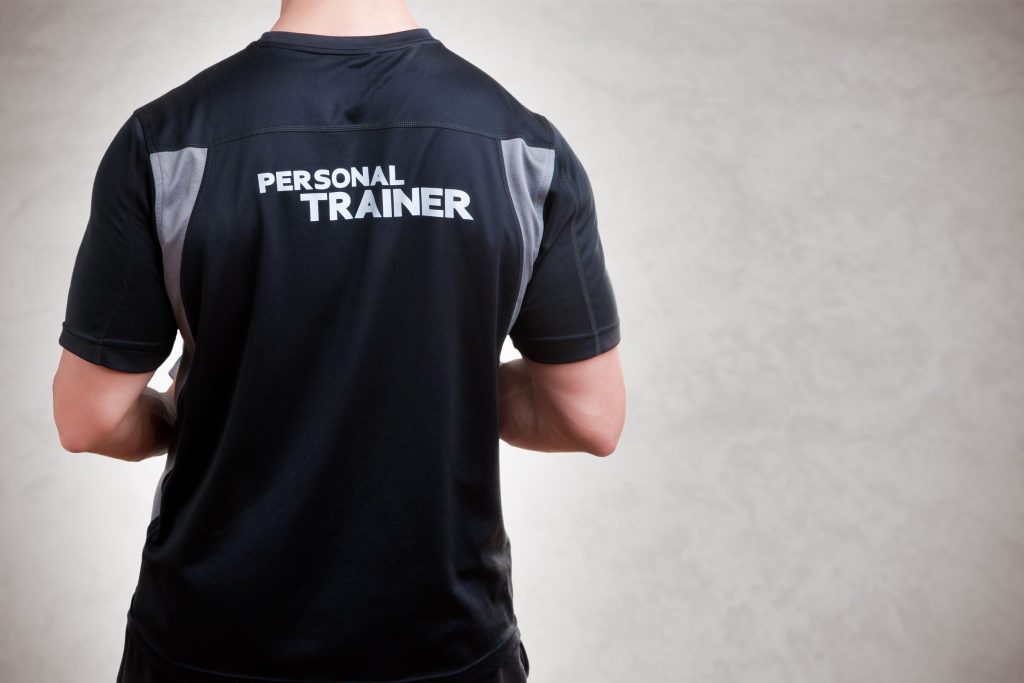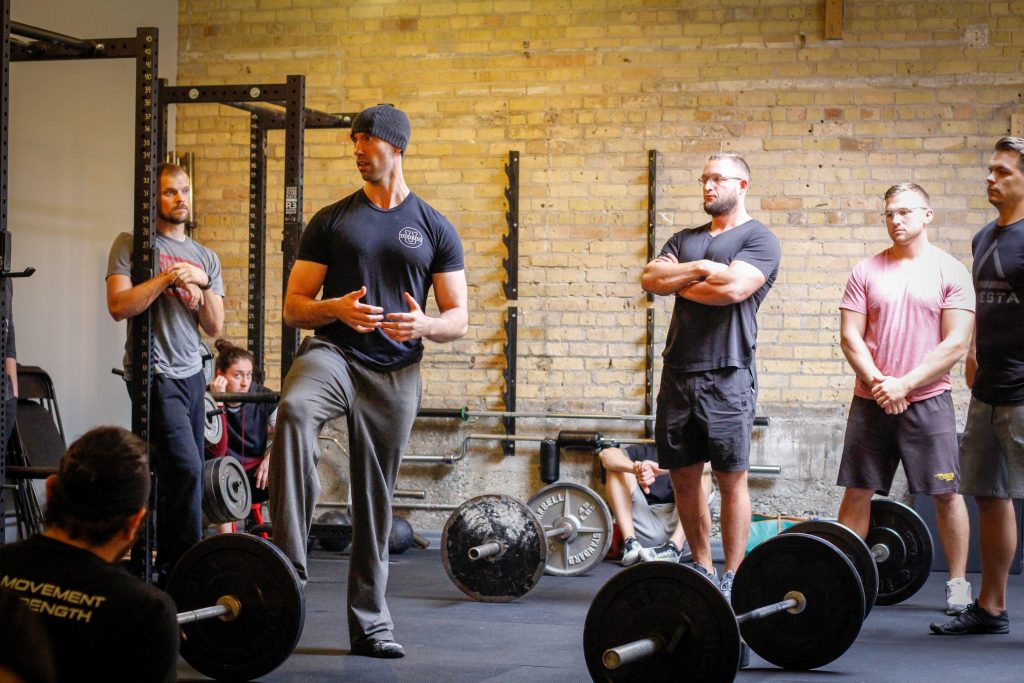If you train people for a living, read this.

Don’t Guarantee Results
It’s seems counterintuitive, maybe even borderline asinine, not to guarantee your clients results, right? I mean, what the hell are they hiring you for?
HINT: It’s not to trade baseball cards or tickle fights.
I had a new client start with me recently and within ten minutes of her initial assessment she was relaying a story of her previous coach telling her she’d see results in “x” weeks.
Guaranteed.
Guess what didn’t happen?
I don’t know about you, but I’d hate to set myself up for that kind of standard or expectation as a coach. Unless their goals are any of the following….
- Cut diamonds with their pecs.
- Build a deadlift that shakes the ground all the way down in Kentucky.
- Become a world class hugger.
…I’m not guaranteeing anything, let alone within a specific window of time.
When a new person shows up to CORE I have zero insight into their work ethic, degree of compliance, or any other outside factors that may or may not come into play (family responsibilities, work schedule, Andor marathon watching schedule).
Don’t get me wrong: There should always be an open dialogue and some form of communication with regards to goal setting. But don’t set yourself (or your client) up for a trap by guaranteeing results.
So, Uh, Since We’re Talking About Goals
It behooves any coach to encourage their client to be more specific with their goal setting. Having realistic and tangible goals in sight helps nudge more intent and purpose.
It keeps people more invested in their training.
Just be careful of someone being too vague (“I want to lose weight”), unrealistic (“I want to add 100 lbs to my deadlift in two weeks”), or downright batshit crazy (“I want to pet a Unicorn”).
Lets us a too vague example.
Too Vague = “I want to lose weight” or “I want to get stronger.”

Neither is a bad goal. They’re just both vague as shit. It’s like me saying something to the effect of “I want food” when asked what I am in the mood for for dinner.
When someone suggests a vague goal like the ones above I’ll usually try to dig a bit deeper:
-
“Why do you want to lose weight/get stronger?”
-
“What’s prevented you from achieving those goals in the past?”
-
“How will attaining those goals make you feel once you hit them?”
Peeling back the onion with follow-up questions reveals quite a bit. The person soon understands they need to switch gears and latch onto something more concrete.
Which serves as a nice segue to…
Try to Encourage More Performance Based Goals
I’ve been a champion of this approach for a number of years now.
Setting performance-based goals is a game changer.
For example, with many of my female clients, instead of allowing them to default to the “I want to lose weight” trope, I’ll encourage them to pick a performance-based goal to train towards instead:
- Perform their first strict, unassisted chin-up
- Deadlift their bodyweight for five reps
- Perform ten, strict pushups from the floor.
- Beat Wonder Woman in a fist-fight.

Setting a performance-based goal makes things so much clearer from a programming standpoint. First off, it makes getting rid of the superfluous foo-foo bullshit easier. Secondly, and most important, is that it gives people purpose in their training.
There’s a WHY behind the madness.
Each exercise, exercise order, load, set/rep, and rest period is curated for the sole purpose of hitting that goal.
To steal a famous quote from strength coach, Dan John:
“The goal is to keep the goal, the goal.”
Either your training program is bringing you one step closer to hitting your goal, or…it’s not.
What I find, more often than not, is when I can get a client to marry him or herself to training for a performance-based goal, the work and effort involved often results in them hitting that aesthetic goal anyways.
It’s a win-win.
The dose of empowerment is priceless.
Set Up Process Goals
This is so simple it’s absurd.
Basically, process goals are smaller, more bite-sized, DAILY, goals people should try to hit that will compliment their ability to hit “big rock” training goals.
I mean, how “strong” is someone going to get if they’re routinely only getting 4-5 hours of sleep a night? What are the chances someone is going to “lose weight” if their idea of a veggie is a piece of lettuce on top of their double bacon cheeseburger?

Setting up 2-3 process goals – getting at least seven hours of sleep a night, shooting for 3-4 servings of vegetables per day, eating out less – for people to strive for every day is a great way to not only keep them on task, but provide an unparalleled sense of accomplishment as well.
As they check off hitting each goal per day, they gain more and more confidence and sense of “holy shit, I can do this.”
Build Autonomy, Competency, and Relatedness
These are just fancy-schmancy ways of saying people want to have a sense of freedom/choice in their training, they want to feel like they can do shit, and they want to be part of a community.1
Autonomy: People don’t like to be told what to do. When someone is told what to do or not to do, the human response is something called reactance.
They revolt. Go against the grain. Tell you to go fuck yourself.
Basically, they do whatever it is you told them not to do anyway.
Admittedly, when someone is paying you to be their coach, there’s a degree of “do what I tell you to do” that comes with territory.
However, I’d encourage any coach or trainer to build a level of CHOICE into their programming.
- Maybe your client gets to choose what variation of deadlift they perform that day.
- Maybe you let them choose if they want to use dumbbells or kettlebells for certain movements.
- Maybe you give them a 5-10 minute window at the end of their session to do some additional glute training.
That sense of freedom/autonomy will undoubtedly build a greater degree of compliance.
Competency: This is easy. People don’t like to fail. I’d argue failing is good and part of the growing process, but that’s besides the point.
People want to feel like they can DO stuff. For example, if someone has little experience strength training, what’s the likelihood they’re going to feel great about barbell back squatting on Day #1.
Now, I’m not saying a good coach can’t teach someone how to back squat in a matter of minutes.
It’s very doable.
However, what I am saying is don’t be a dickhead. It can be intimidating for some people to place a barbell on their back, and you’re not doing them any favors by force-feeding it.

I feel the squat is a valuable pattern everyone should become competent with. That doesn’t mean everyone has to start with a barbell on their back.
Goblet squats are a splendid starting point for many people. Once they’re comfortable with that, we can progress accordingly.
Relatedness: Keeping this one brief, going out of your way to build a culture where people are surrounded by like-minded individuals and they can be themselves is paramount.
Don’t Be Scared to Dish Out Some Tough Love
Bringing this whole discussion full-circle: Remember that new client I mentioned above, the one who told me her previous trainer guaranteed her results?
She asked me an obvious question:
“When do you think I will see results?”
My response:
“If you kinda-sorta train, you’ll get kinda-sorta results.”
This was a (maybe not so subtle) hint that it’s up to HER.
You get out of training what you put into it.
As someone’s coach I’ll be there to support them and help augment their training experience. However, it’s also important to relay the message that part of the onus on them, too.
They have to take ownership and responsibility.










